Miscellaneous
Other Invertebrates
This
page was born 12/01/2002. Rickubis designed it.
(such as it
is.) Last update: 6/21/2023
(renamed the page 2/12/2021)
Images
and contents on this page copyright ©2002-2023
Richard M.
Dashnau
Go back to my home page, Welcome
to rickubis.com
Go
back to the RICKUBISCAM
page.
Today
is 2/12/2021. In the years since this page first appeared (2002), I've
observed many animals and plants, and documented them on these pages.
But, there will
always be those animals that I might only encounter
once. I'm going to place invertebrates that I've captured on film, and
without a page of their own...here. So, molluscs,
crustaceans,
jellyfish (that group that I knew as coelenterates--now
different), bryozoans--etc. may be seen here.
At Scobee Field on 10/16/2021
I found this burrow, and it had water in it. I had a brief view
of something moving in the hole, and took some pictures of a crawfish's
face before it submerged
but they didn't come out very well.
But at least I knew that the hole belonged to a crawfish. For the next
40 minutes, I stalked the hole, and caught some pictures and short
video
of the crawfish. From the size and color (and location) I assume that
this was a Red Swamp Crawfish (Procambarus clarkii). Even though the
burrow was in a ditch,
there was no chimney, but if there was one, it had probably been crushed by the machinery that left tracks in the mud.
I
read a lot of literature about this species of crawfish. There are
descriptions of their physiology and their tunneling
behavior. In "Burrowing activity of Procambarus
clarkii
on levees: analyzing behavior and burrow structure" by Phillip J.
Haubrock . Alberto F. Inghilesi . Giuseppe Mazza . Michele Bendoni .
Luca Solari . Elena Tricarico (2019)
I found a brief reference
to "the typical sideway position used in this species to breathe air
oxygen outside the water" .
In "Procambarid Crawfish: Life History and Biology W. Ray McClain and Robert P. Romaire (2007)
"For
unknown reasons, some individuals will not burrow as the habitat dries,
while others will construct very shallow burrows that can quickly dry
out and lead to death." "Crawfish burrows
are usually
dug by an individual crawfish, with the burrow diameter determined by
the size of the crawfish. The burrow extends downward into a terminal
chamber that is slightly larger than
the diameter of the
tunnel." "it is thought that any free water in a burrow is likely to be
trapped water, perhaps from rainfall seepage, rather than water seeping
into the burrow from the water
table. When there is no standing water in the burrow, wet mud in the chamber serves as a humidifier."
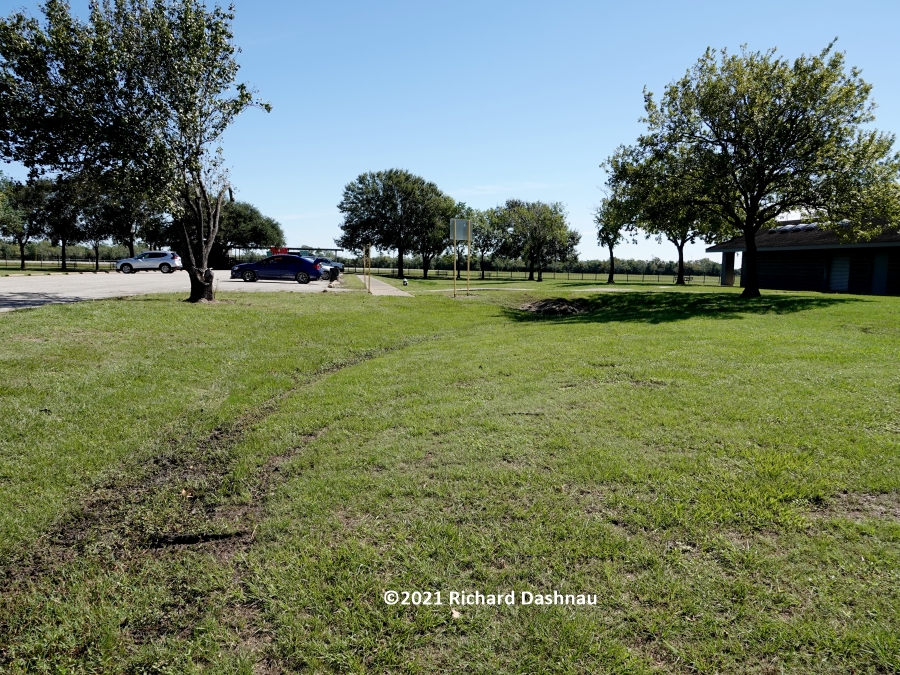
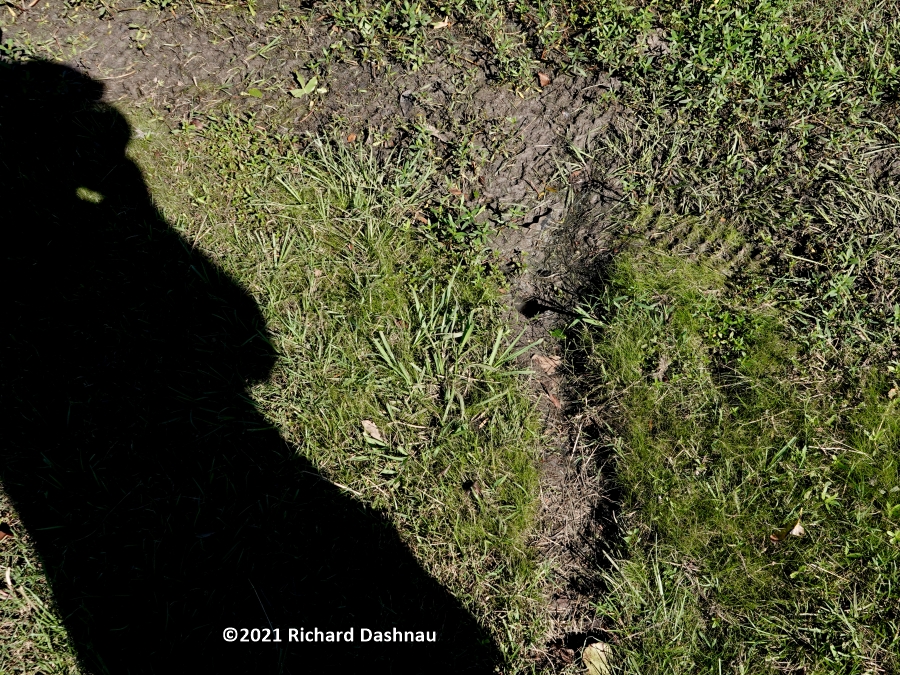
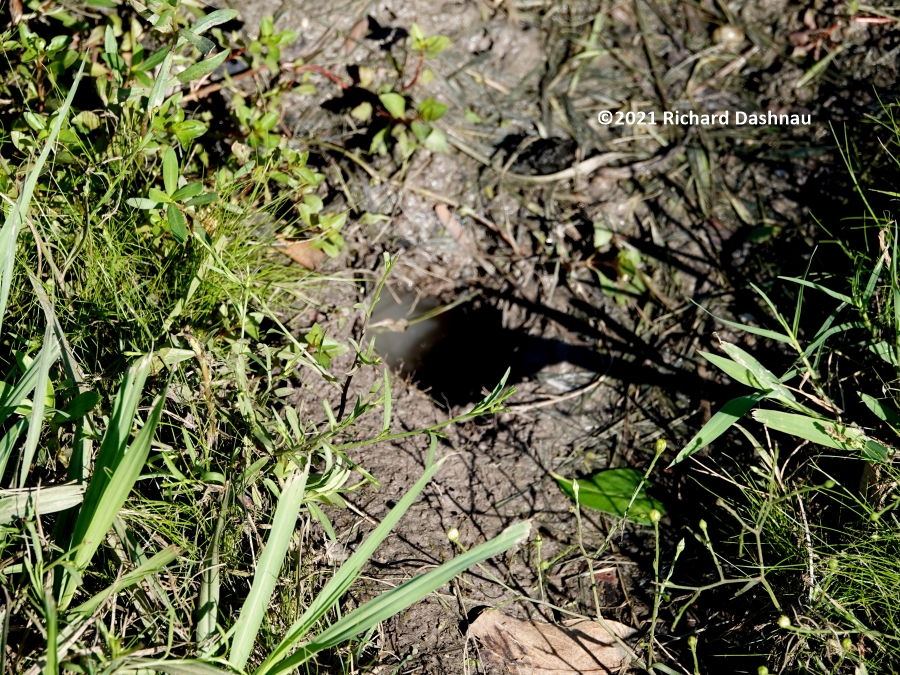
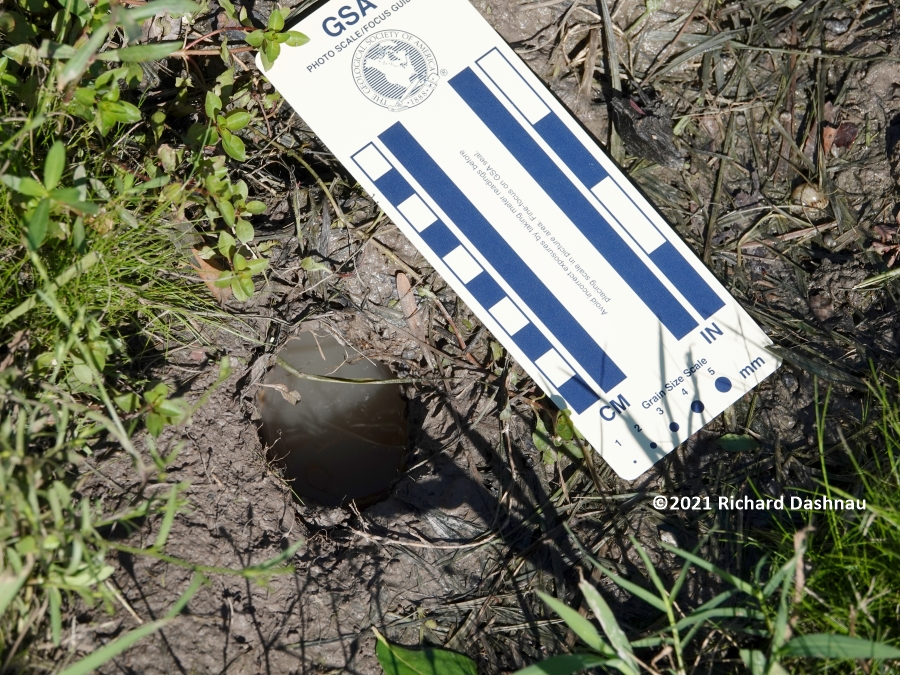
In
"Gill Morphology in the Red Swamp Freshwater Crayfish Procambarus
clarkii (Crustacea: Decapoda: Cambarids) (Girard 1852) from the River
Nile and its Branches in Egypt: by
Mohamed M. Abumandour
(2016) describes: " From available literature, it is well known that
there were special anatomical characters of the respiratory adaptations
of crustacea to
terrestrial and amphibious life, in which the
crayfish can live for weeks in burrows without free water and adapt to
survive for long periods of hypoxia that occur within this burrows due
to the
large surface of respiratory gill area." The crawfish
exposed its side to the air, in a "breathing posture". In the
closeup, there are feathery structures visible at lower edge of the
carapace,
where the legs are attached. I think these are
sections of the gills, specifically the "podobranchiae" one of three
types of gill structures possessed by crawfish. ("The red swamp
freshwater
crayfish possess a trichobranchiate gill type, which
consists of three types according to their place of attachment on the
body; podobranchiae, arthrobranchiae and pleurobranchiae." from
Abumnador
2016). With such an abundance of gill tissue, crawfish can move around
in air for some time-as long as the gills are kept moist.
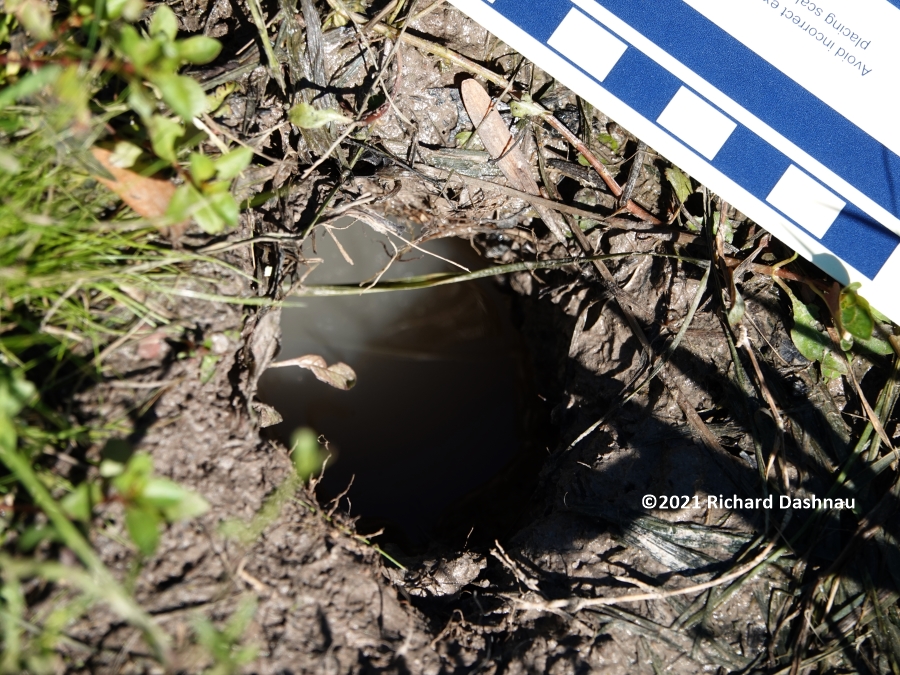
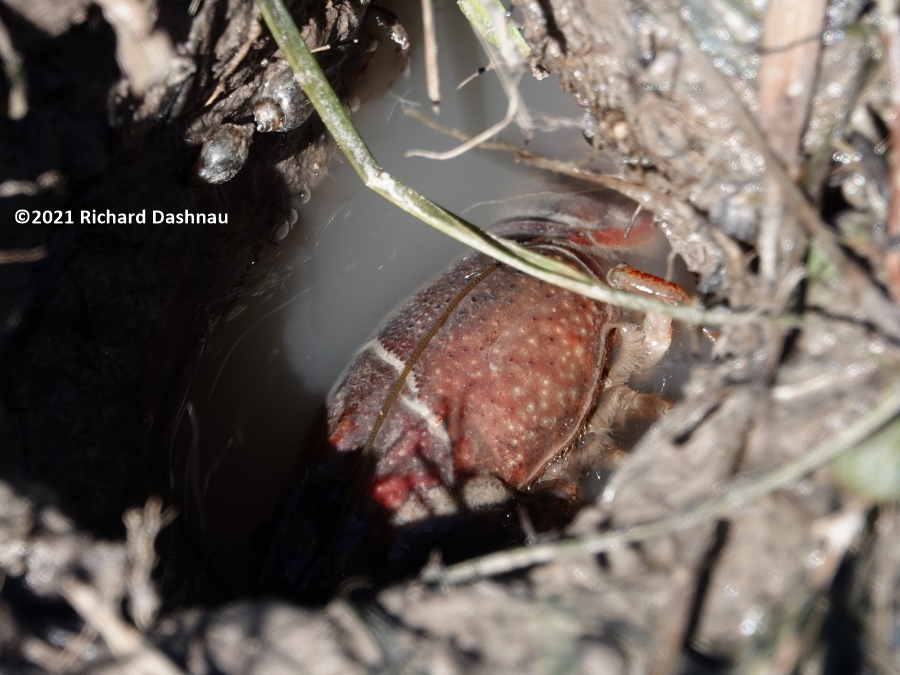
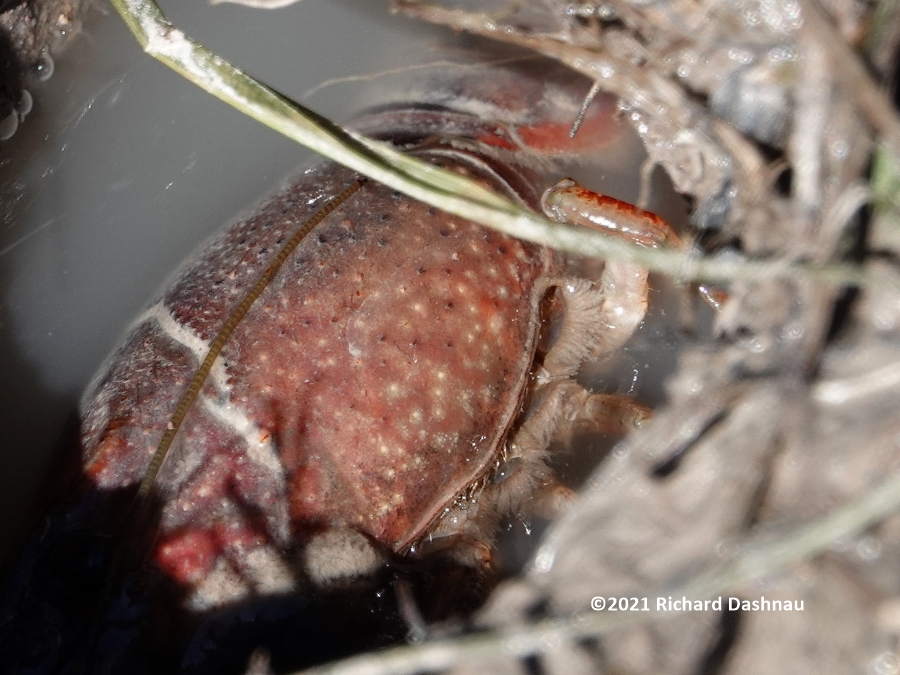
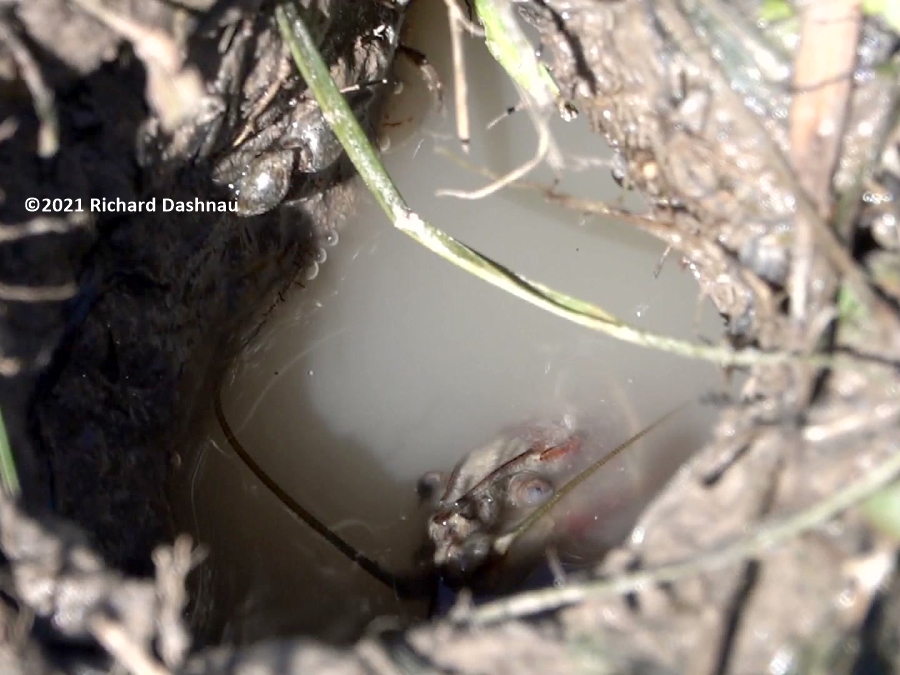
I
had to walk away from the burrow, then move back slowly, and then use
telephoto shots to catch the crawfish unawares. I got a few shots of
its face before it backed under the water.
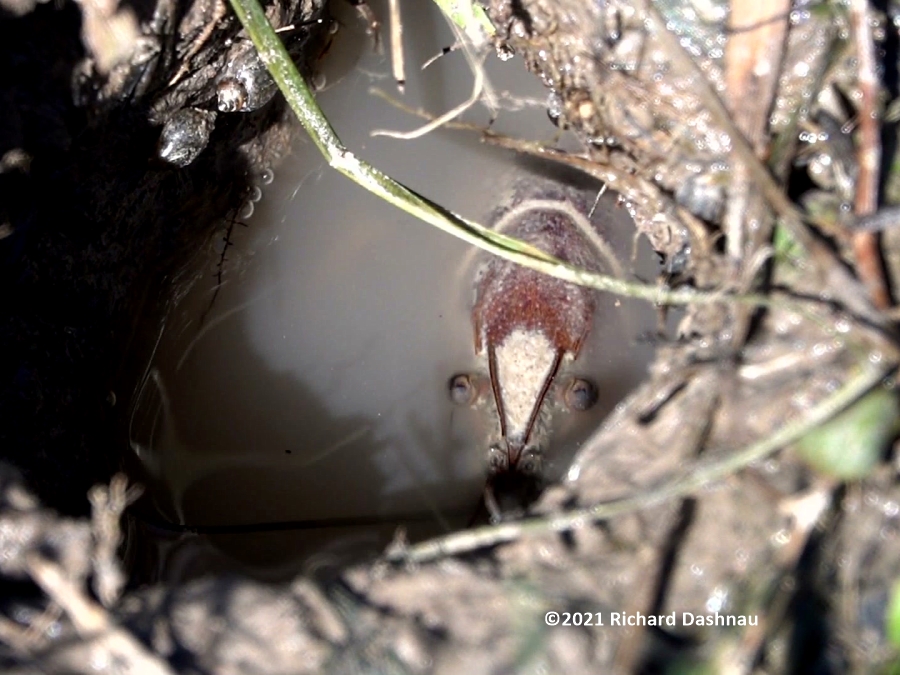
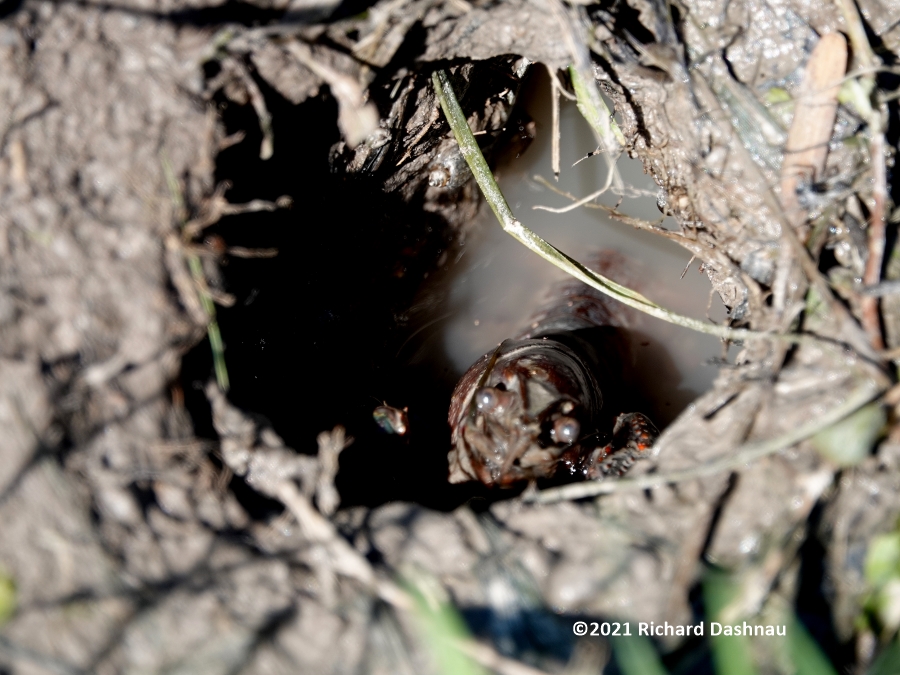
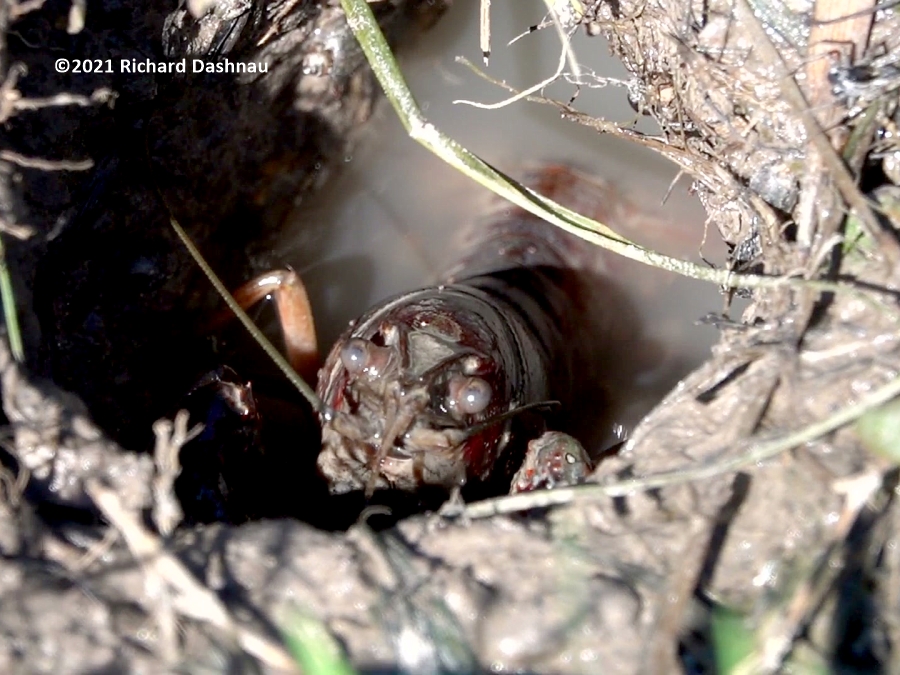
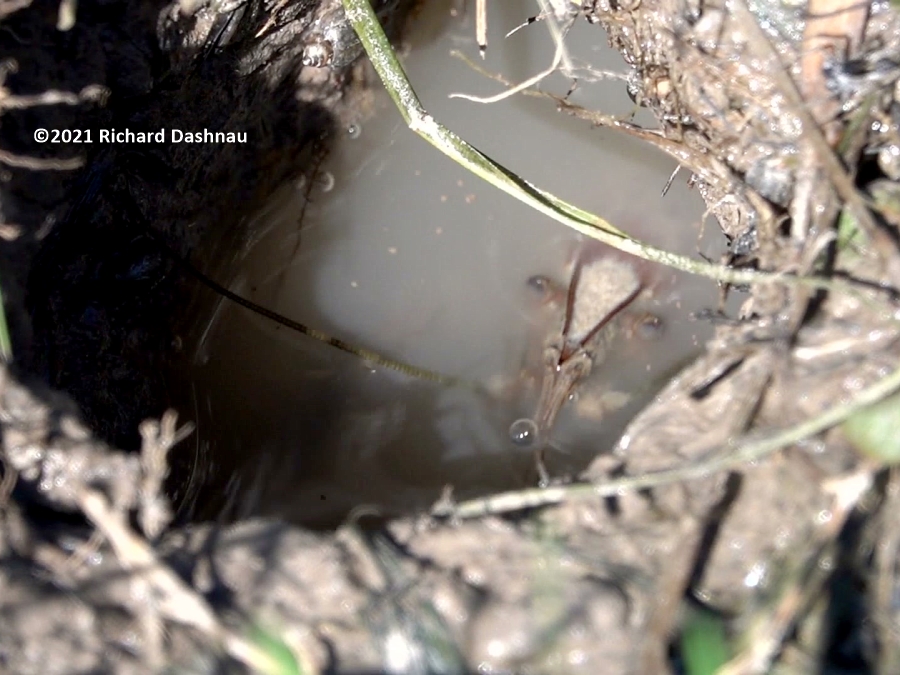
These pictures of Scobee Field from 10/02/2021-- 10/09/2021 show how the water levels can change at the park. Since Scobee Field is inside Barker Reservoir, it is going to flood if we
get
enough rain. After all, Barker Reservoir was built to collect water and
control it to avoid flooding Houston, which is East of this area.
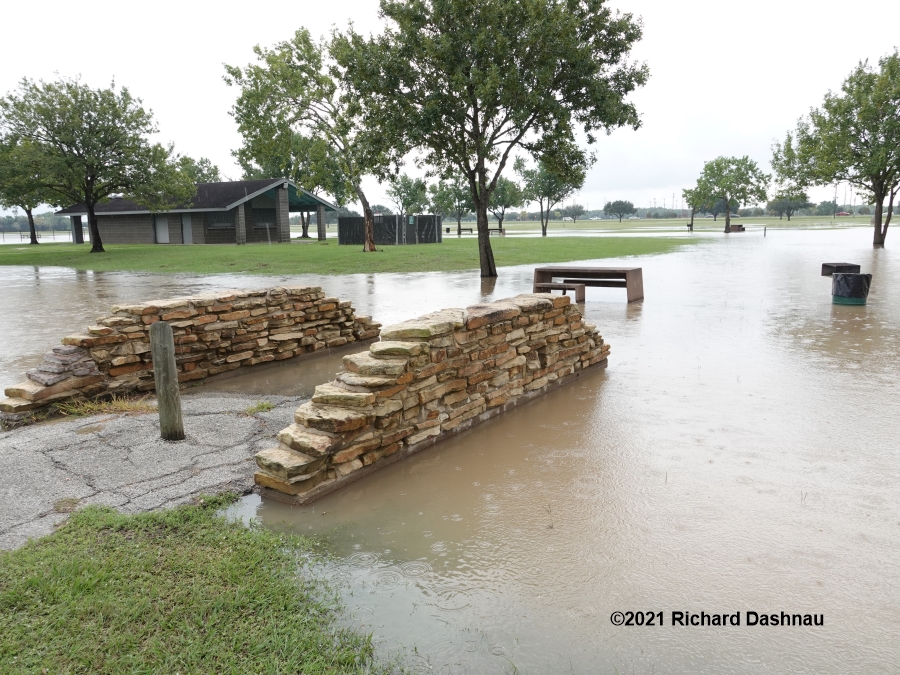
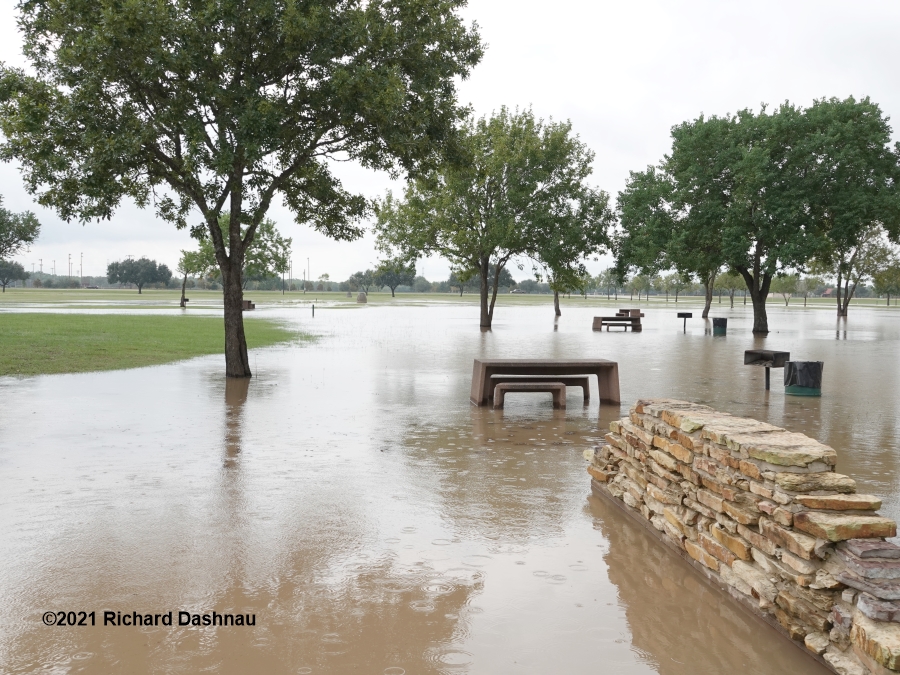
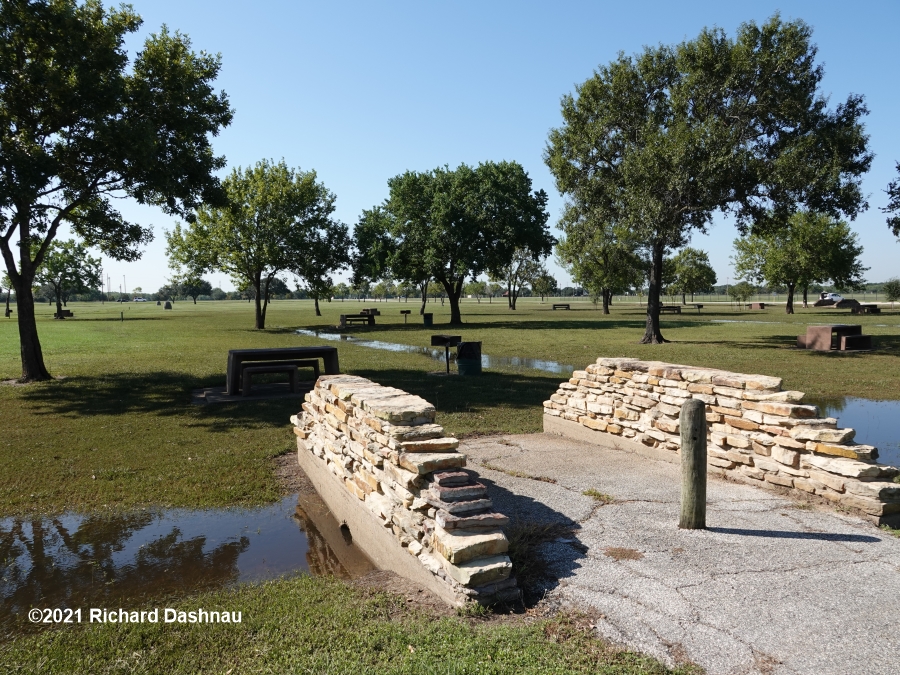
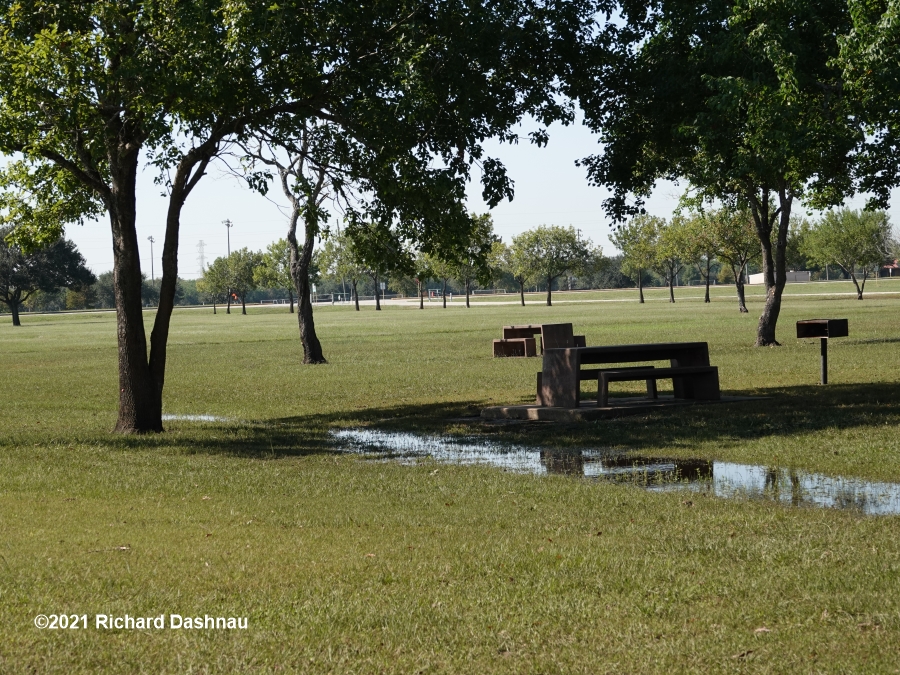
10/02/2021
10/02/2021
10/05/2021
10/05/2021
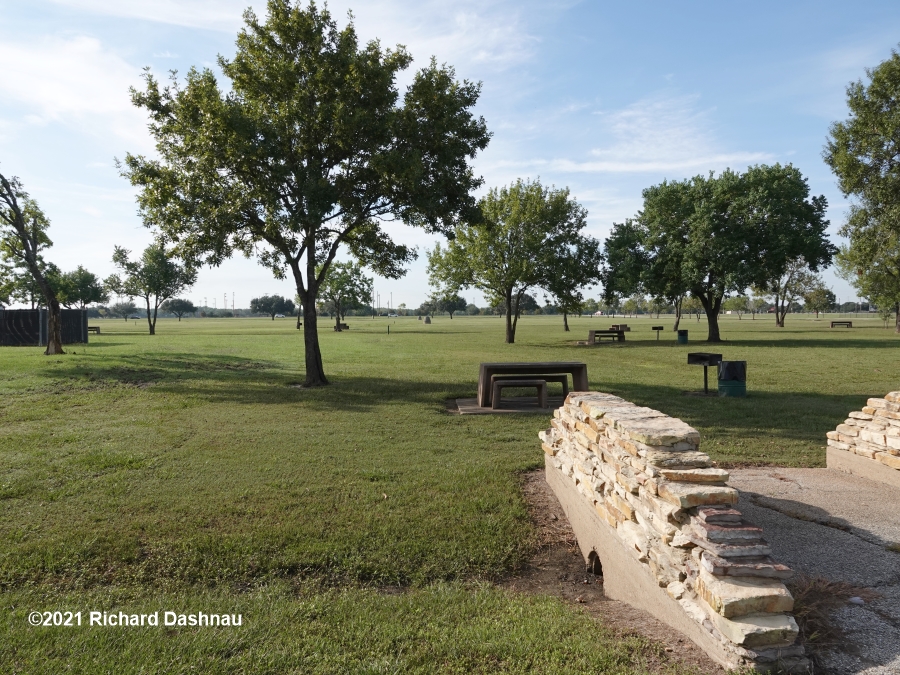
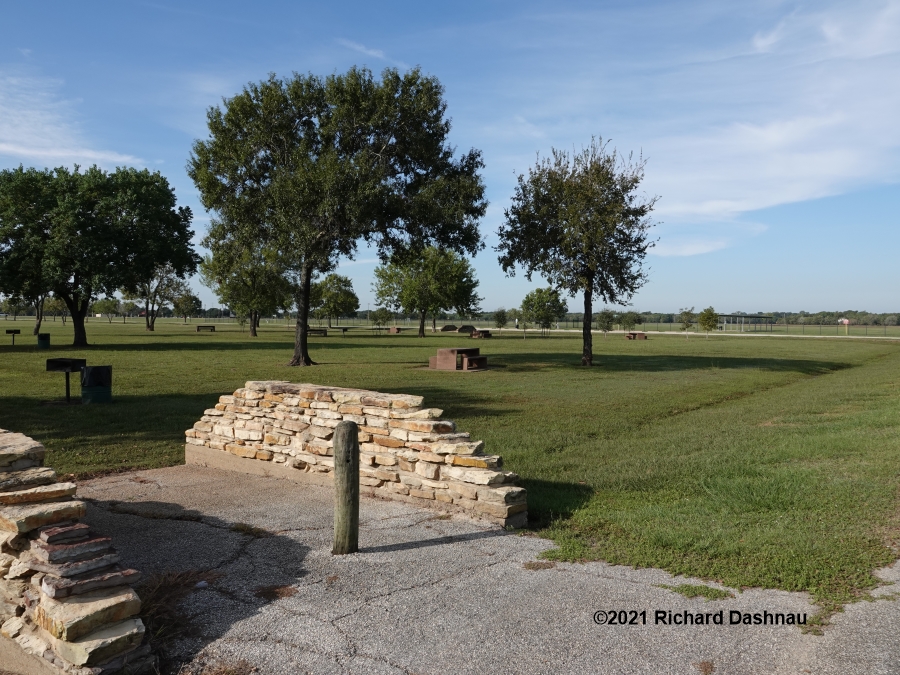
10/09/2021
10/09/2021
At Scobee
Field on 9/18/2021--This
time I found a fresh hole. The ground was soaked well, so the mud was
soft, and didn't mold into solid pellets for making a chimney. But I was able to
get
a quick look at the crawfish's mud-covered face in the hole before it
dropped out of sight.
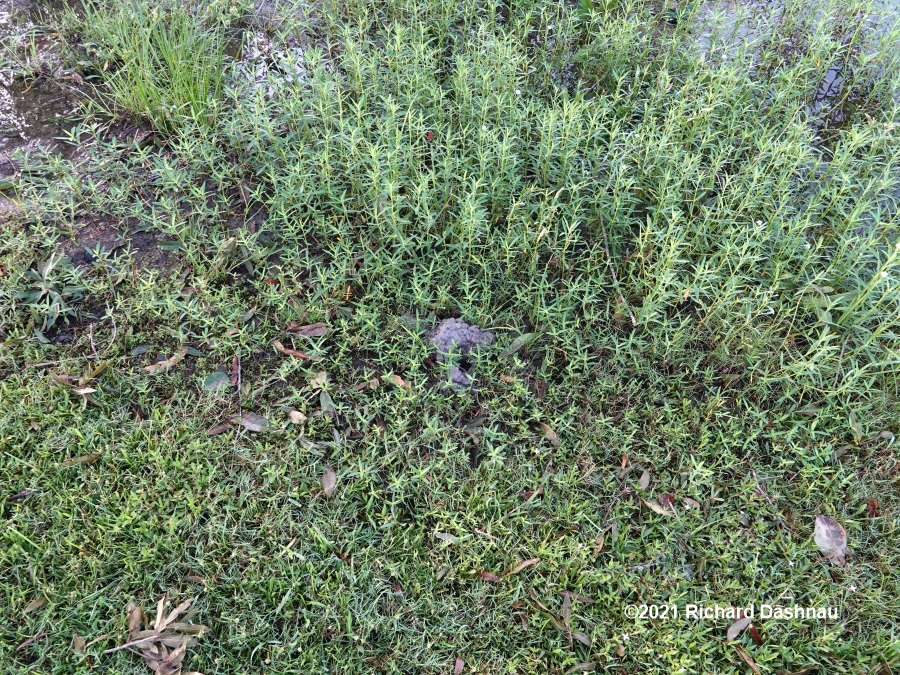
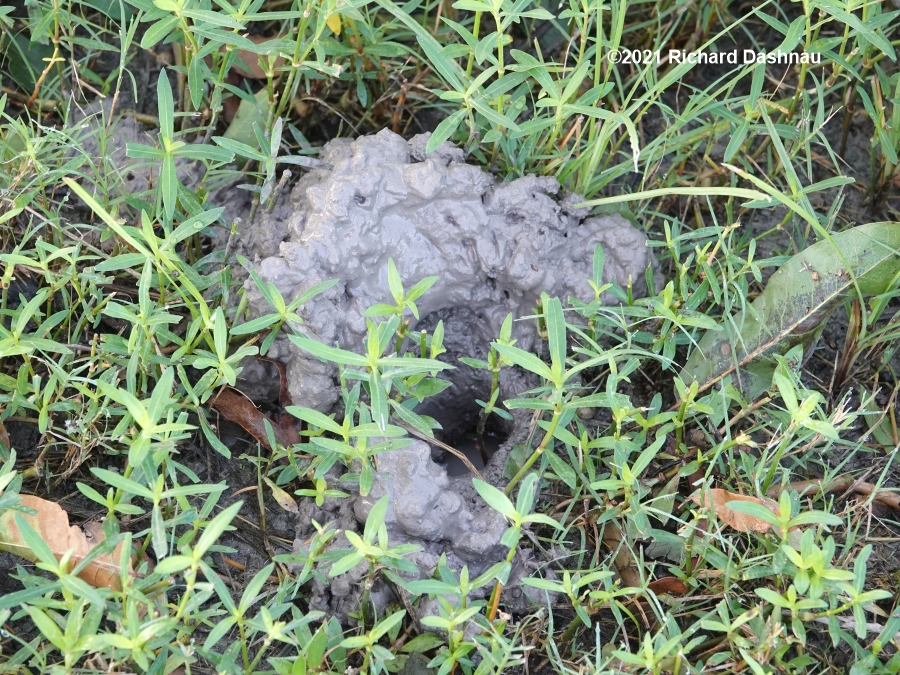
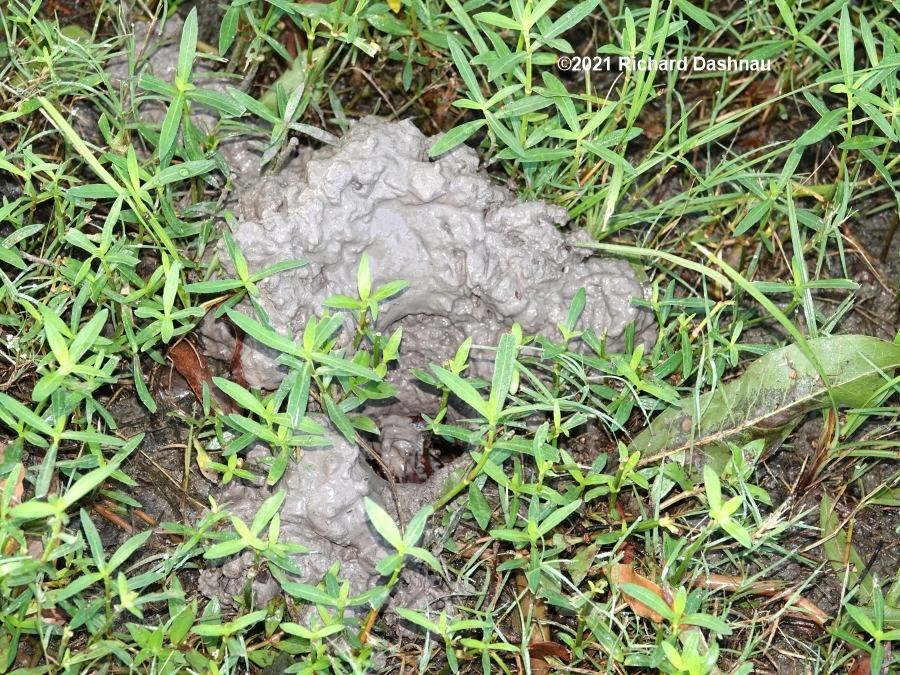
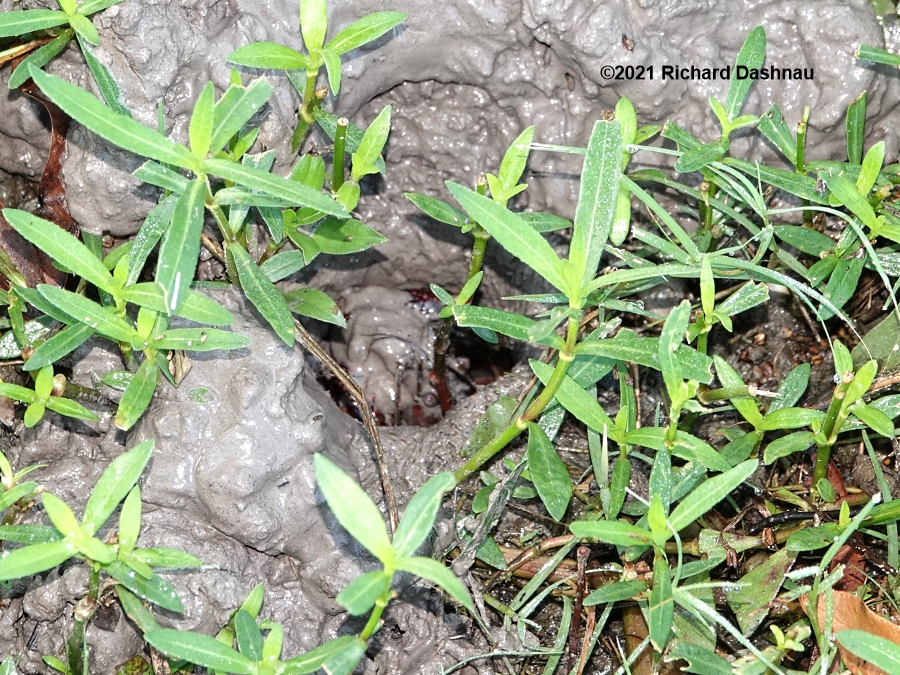
spring/summer 2019
(BIG CRAWFISH!) I have just realized that I
have rarely said anything about our native crawfish anywhere on my pages(people here say "crawfish"
instead of "crayfish", so I go with that) . This entry is a brief
mention this
particular species, which has amazed me since I first noticed it.
The Red Swamp Crawfish (Procambarus clarkii) lives here, and
Houston
seems to be in the center of the "native range" for
this species. It's VERY large. Information about them can be
found on the USGS page
here: https://nas.er.usgs.gov/queries/factsheet.aspx?SpeciesID=217
According
to that website, their adult size is "from 5.5 to 12
centimeters
(or 2.2 to 4.7 inches)". The crawfish are omnivores, and can
be
very voracious in an enclosed ecoystem (as in an
aquarium). They live
in a variety of freshwater habitats. As I've seen here, if the water
level in their environment drops, they tunnel down to meet the water
table. As the website mentions, they
are "physical ecosystem
engineers". Along with tunnels, they create chimneys from the
burrowed mud.
Red
Swamp crawfish are commonly eaten by humans, and have been successfully
cultivated for that purpose. They are also very good at using their
enviroment. These two factors have
caused some problems in area inside
the U.S. (but outside their native range) and also in other
countries--where this species as become an invasive pest. These
crawfish have appeared on
other pages of mine here, but usually in the
jaws or beaks of other animals. (I admit that I am merely assuming that
all of the big red crawfish are this species. For today's
entry, I'll just share
these three images from 2019, which show claws
that had been discarded on the trail at Brazos Bend State Park. These
pictures were taken on three different days. The claws alone
are
about 3 inches long!
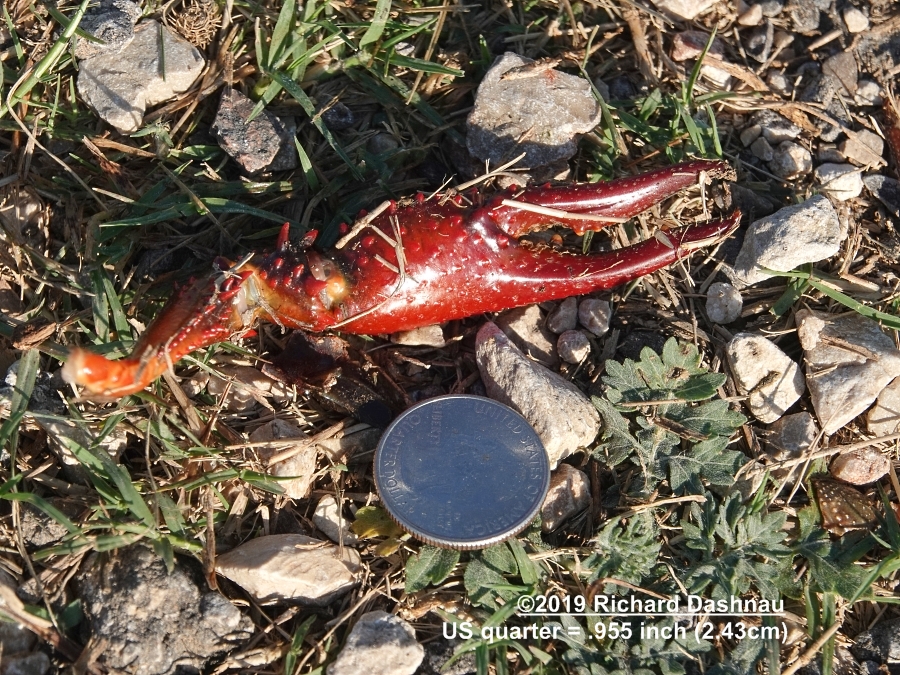
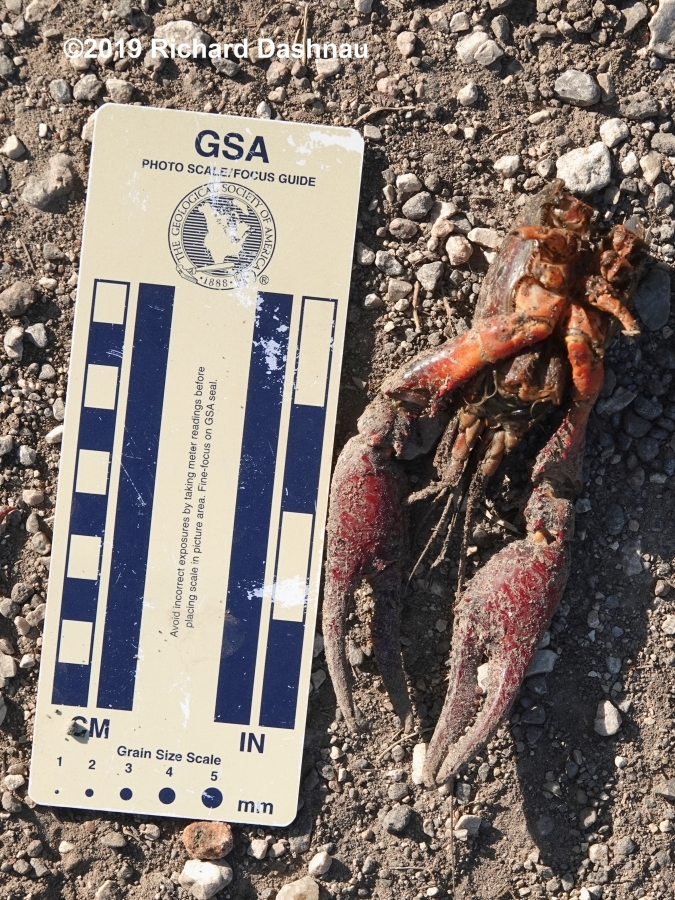
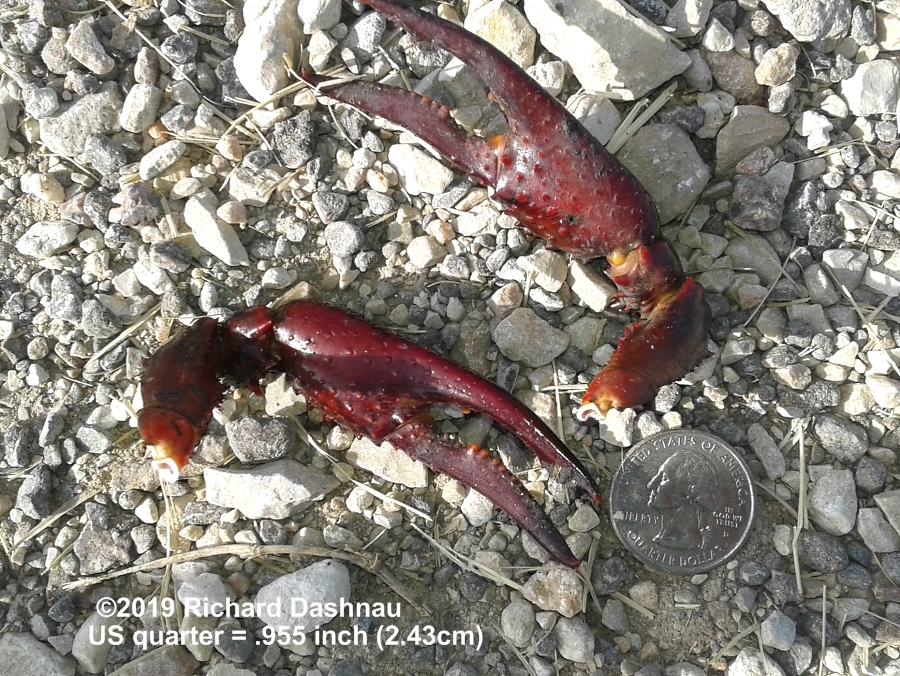
April 28, 2019
May
05, 2019
July
28, 2019
July
12, 2003After
finishing an excellent lunch of a shrimp po'boy (KICK-BUTT shrimp!) and
fries, I sat and enjoyed my favorite company and the view from the back
deck. Then, we went down a
flight of stairs, and took some time to
take a look around at the water. Just a nice, relaxing lunch. While we
were looking around, these jellyfish would occasionally surface (see NO
PB, below),
then slowly sink back down. It is probably a Sea Nettle, (Chrysaora
quinquecirrha), but I'm not certain (coelenterates are not familiar to
me). Sea Nettles can give a "moderate to severe" sting,
which, I suppose,
is how they got their name. I enjoyed watching them swim by.
Anyone
who wishes to can watch this video
clip (flv video, 315 kb) and see one swimming,
also. Spongebob,
of
course, is that cartoon character with the annoying laugh who likes
to go jellyfishing.
------------------------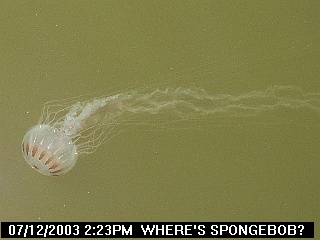 ------------------
------------------
IT'S A "NO PB, JUST J" FISH
------
February
23, 2002
I
was visiting Donna, and went out for a walk around her house. I saw
this...mass...
moving near a shallow pool off near the cove, just at the edge of her
yard.
On closer
inspection, it turned out to be lots of little fiddler crabs.
They were quite responsive to my presence, clearing the area while I
was
at least 20 feet away. I walked into the grass, and flushed some
out so
I could capture their image on video. Click here
to see it. (.mpg,
no sound, 1,671kb) The
image below is a picture
of one of the crabs in my hand.
--------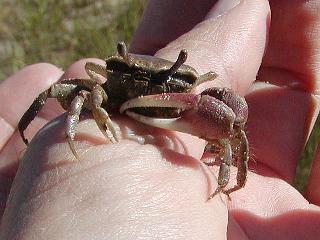 ------------
------------
---------FFIDDLER
CRAB
January
1, 2003HAPPY
NEW YEAR! If you
don't feel like wrecking yourself with various recreational
perception-altering
substances on New Years' Eve, then you can wake up at a
decent hour and
really enjoy the first day of the new year. I realise this
sounds
blasphemous to a large number of people, but what do they know? After
all,
"partying" for a number of years has
certainly had deleterious effects
on their brains. Hence, they are thinking at less than optimum
capacity,
anyway. So...it
was a beautiful day. While wandering around Galveston State
Park,
Donna
and I encountered this alligator in one of the fresh-water ponds. (New
Years Gator, below) When we first noticed him, he
was further
away, and was showing this posture. As we
watched, it turned 90 degrees,
still maintaining posture, and then reversed direction, and returned to
original position. We approached closer, and were about 15 feet behind
when I took the
picture. I saw no other alligators around.
Then, later in the afternoon, I was in the front yard of Donna's house
when I noticed an amazing thing. Thousands of strands of web (or some
kind
of
"arthropod silk") were spread over the entire yard. They weren't
visible
unless I caught the sun relflection off of them at the correct angle.
The
image below (WHAT THE HECK?!) shows a portion
of the yard with these strands.
Click
here to see a larger (800
x 600) image which shows a greater area. When I examined some
of the
strands closer, I couldn't find any kind of organism attached
to them.
But, there were so many strands, it was hard to pick out a single one.
The other picture below (MY GOSH! IT'S FULL OF STRANDS!) shows another
portion of the yard, and the webs
can be seen some distance away.
Since I had to have the sun in front of me to see the web material, it
was hard to get a clear picture.(clicking the image will show an 800x600
version). I called
this "arthropod silk" since I can't be sure that
spiders were the organisms responsible for this--not since I learned
about
Barklice.
--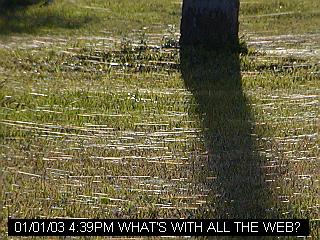 -
-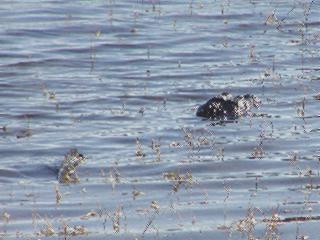 -
-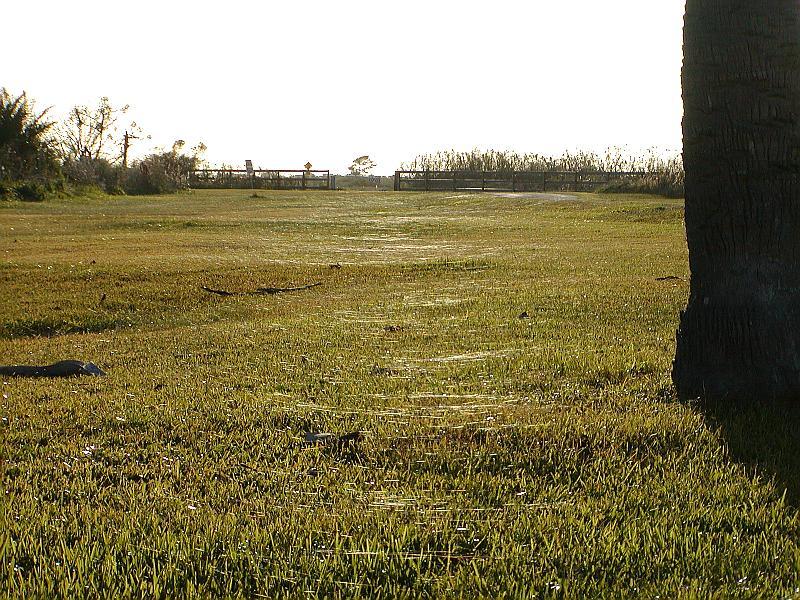
WHAT
THE HECK!?
NEW YEARS GATOR
MY GOSH, IT'S FULL OF
STRANDS!
If
you'd like to know more about the park follow these links:
Brazos
Bend State Park
The main page.
Brazos
Bend State Park Volunteer's Page The
volunteer's main page.
Go back to my home page, Welcome
to rickubis.com
Go
back to the RICKUBISCAM
page.
Go
back to the See
the World
page.





























